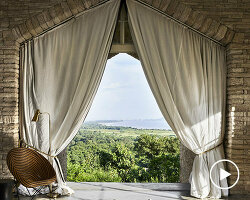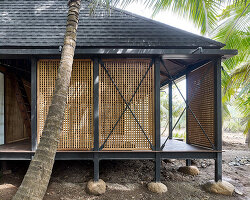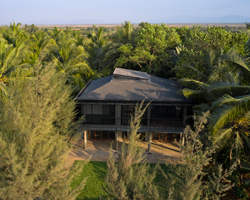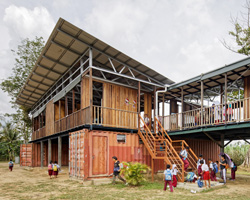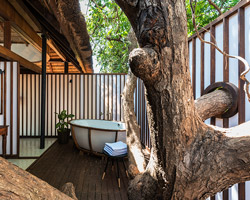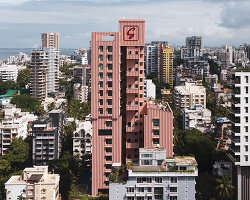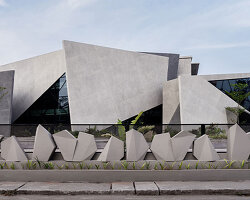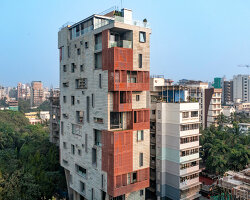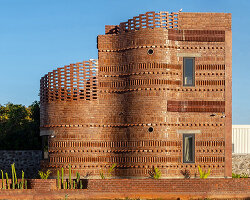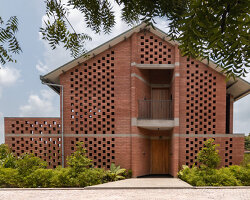the humanitarian work of architecture brio
shefali balwani and robert verrijt of architecture brio founded their practice with great influence from their diverse backgrounds. while robert grew up in a small hamlet village of netherlands, shefali was born in mumbai. while the studio was certainly shaped by these unique contexts, the architects note influences picked up through their travels along the way — including kyoto with its biodiverse moss gardens, and sri lanka where robert verrijt worked for the great master architect geoffrey bawa.
alongside architecture brio, the two architects developed a dedicated innovation group bB-studio with the NGO billionBricks — with the aim to address the global demand for housing with the mantra ‘never design poorly for the poor.’ the team looks to the developing world as a potential ‘leapfrog to a sustainable future’ rather than a global environmental disaster waiting to happen. so far, the team is in the process of developing a community of 500 homes in the philippines.
designboom speaks with principals shefali balwani and robert verrijt of architecture brio to learn more about these influences and ongoing efforts.
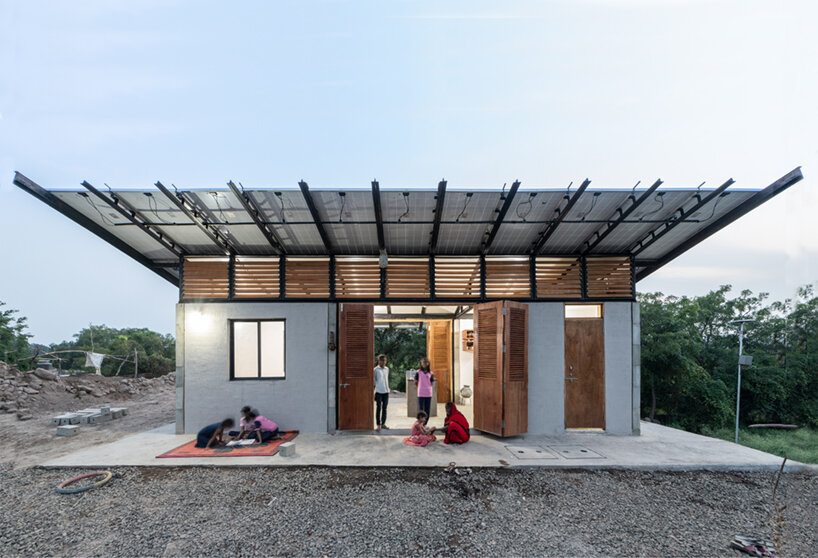
‘billionbricks homes,’ powerHYDE
A dialogue with the architects
designboom (DB): what aspects of your backgrounds and upbringings have shaped your design principles and philosophies?
robert verrijt (RV): I am from a small sleepy village in the netherlands while shefali grew up in bustling mumbai. being from a nondescript hamlet, I had an early urge to get away. I spent many summer holidays roaming from city to city through southern europe with a group of close friends. during my student years at tudelft, I travelled to japan, and studied a semester in india which reiterated my interest in asian cities and culture. of course I never planned to end up living in mumbai for 15 years of my life, but the sequence of events and life choices now seems very natural to me.
shefali balwani (SB): after graduating, robert went to work in sri lanka, in a practice that had emerged from the legacy of the great master architect geoffrey bawa. I started my professional career in the office of rahul mehrotra and then joined robert in sri lanka. after a few years, we started our own practice in mumbai. the first years happened to coincide with the financial crisis of 2007/08. but in retrospect this was perhaps a blessing. because it allowed us to slowly build up our practice, build up a client network and patiently develop a critical engagement with the profession. this allowed us to formulate an understanding of what we wanted to do, and definitely did not want to do. it also preserved us from being typecast as specialists in a certain type of project, as it allowed us to build a diversified project portfolio.
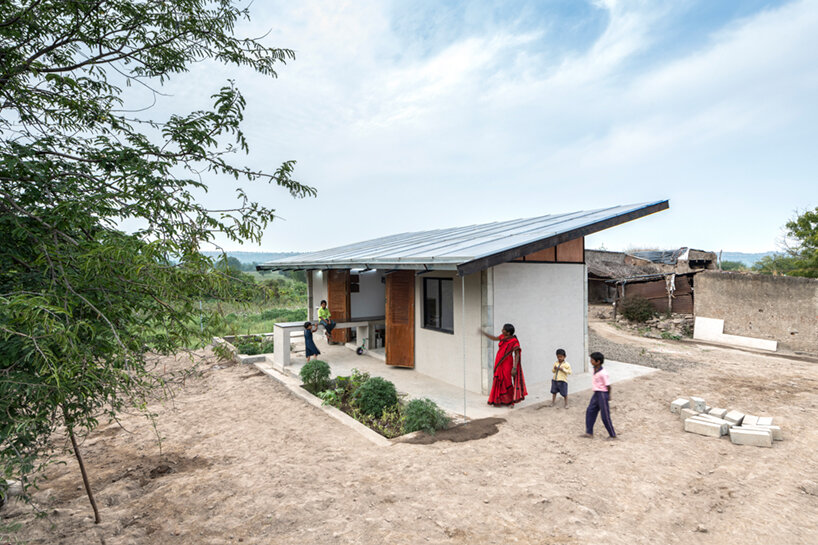
‘billionbricks homes,’ powerHYDE
RV: the indian context is very peculiar and distinct to me. being intrinsically familiar with several contexts makes you very aware of what opportunities and possibilities a particular context has to offer. in our work we explore, conceptualise, reveal and exploit these in such a way that they become the guiding principle for a project. many a times they arise out of fascinations that have lied dormant for years such as in the example of a cherished but never executed project.
years after visiting and being so inspired by the moss gardens of kyoto, we suddenly got the opportunity to design a project in sikkim, a climate where mosses thrive. as pioneer species, mosses kickstart ecological succession and therefore tells a wonderful story about biodiversity. the design of the biodiversity institute together with elements such as the beautiful stone walls we saw in sikkim and the idea of a building as a tectonic uplift is built around this idea of mosses and lichens forming an educational element on the building exterior.
india is so varied — and we are blessed with being able to do work in these diverse places — that there is always a completely new story to discover.
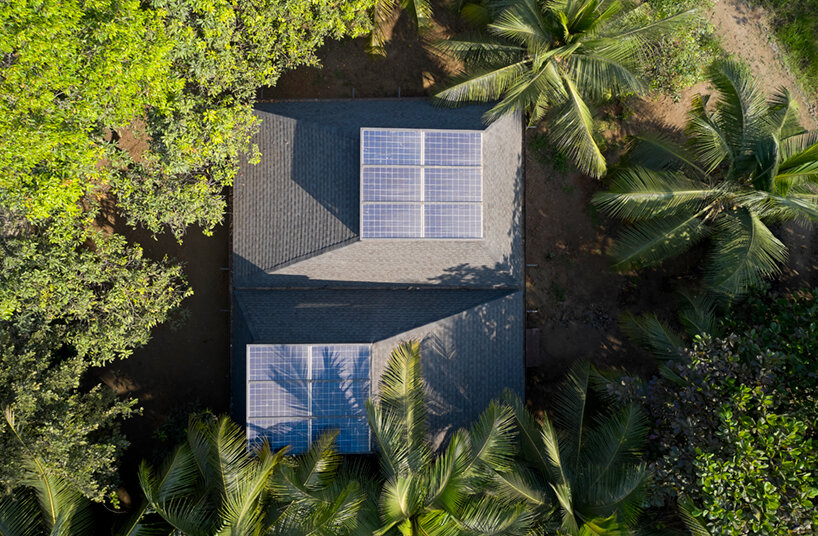
architecture brio elevates mumbai artist retreat on boulders to protect it from flooding | read here
SB: since the past one year, we practice both in mumbai and rotterdam and are often far removed from the reality and physical presence of a specific location. although even within india this is often the case. for example it takes 24 hours for us in our mumbai office to reach the hamlet of sitla, where the himalayan mountain home is under construction. in less time one can fly to pretty much any other capital city in the world.
in this scenario one needs to develop a very strong perceptive capacity and rely on instinct. and one can certainly benefit from a degree of naïveté in relating to contexts. india, where most of our work is located can be overwhelming sometimes. but this should never cross over to the side of a wilful ignorance. because, not understanding a place, is never productive. so the visits that we do make to sites are super intense, and the learnings of both their differences and commonalities become ingredients for consecutive projects.
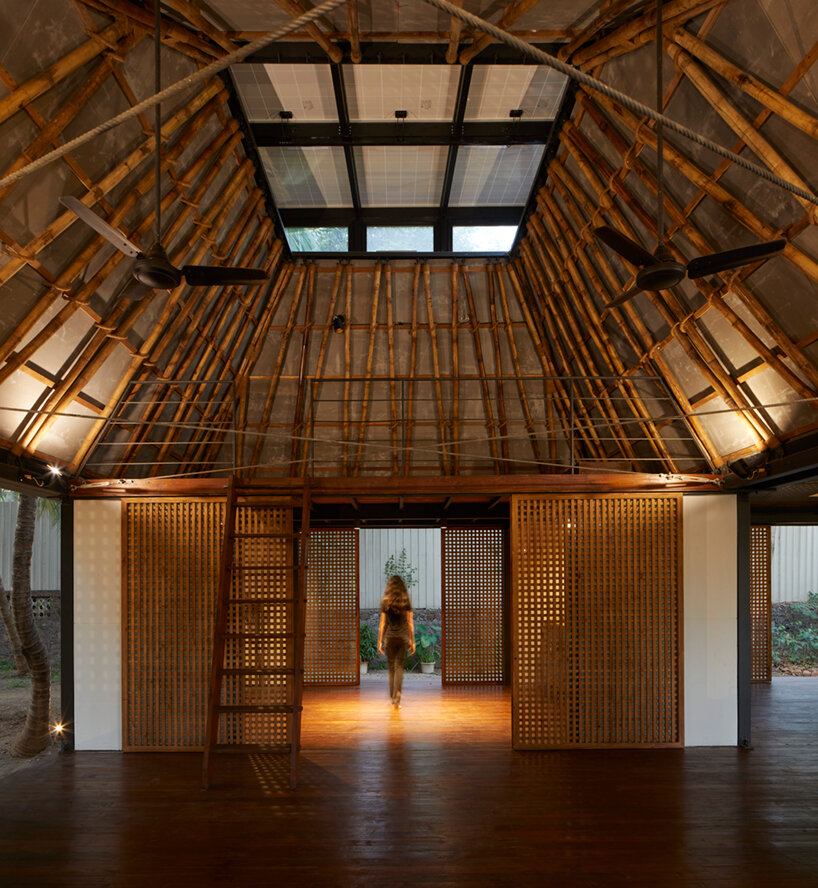
architecture brio elevates mumbai artist retreat on boulders to protect it from flooding | read here
DB: how are projects developed within your team, from idea to realization? are sketching and model-making still a part of the process?
RV: for me, personally, sketching starts with procrastination. in ideal circumstances, when our office is offered the luxury to evolve a design over a couple of months, taking up the pencil to start sketching is postponed as much as possible. inspiration doesn’t come with a blank sheet. starting to sketch on a physical blank paper from a sort of zero place is undesirable.
for me, the fore, sketching first happens in the mind. through asking the right questions, formulating ideas on the project, conversations with within the office, understanding the site. one by one the endless possibilities of ideas and concepts are filtered down and a few potential approaches appear. lines, shapes, relationships and divisions are drawn in the canvas of the ‘mind.’
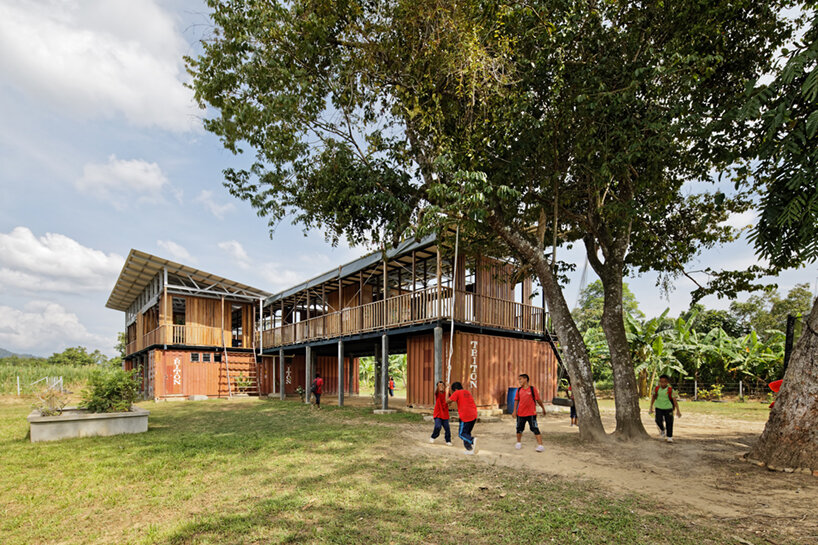
architecture brio + billionBricks build elevated school in malaysia for marginalized children | read here
however, good architecture is not a product of individual creativity. sketching is a communication tool that enables us to work together to exchange and evolve ideas. all our initial presentations to clients are always done entirely with hand sketches. a sketch invites discussions in the realm of ideas and this is a wonderful process to go through together with a client.
the reason why I also personally love sketching is because it invites mistakes into the process. the tremor of the hand, the slight disproportion of a line, the overlay of iterations and corrections on top of each-other take the work away from the world of rational order into the realm of human experience.
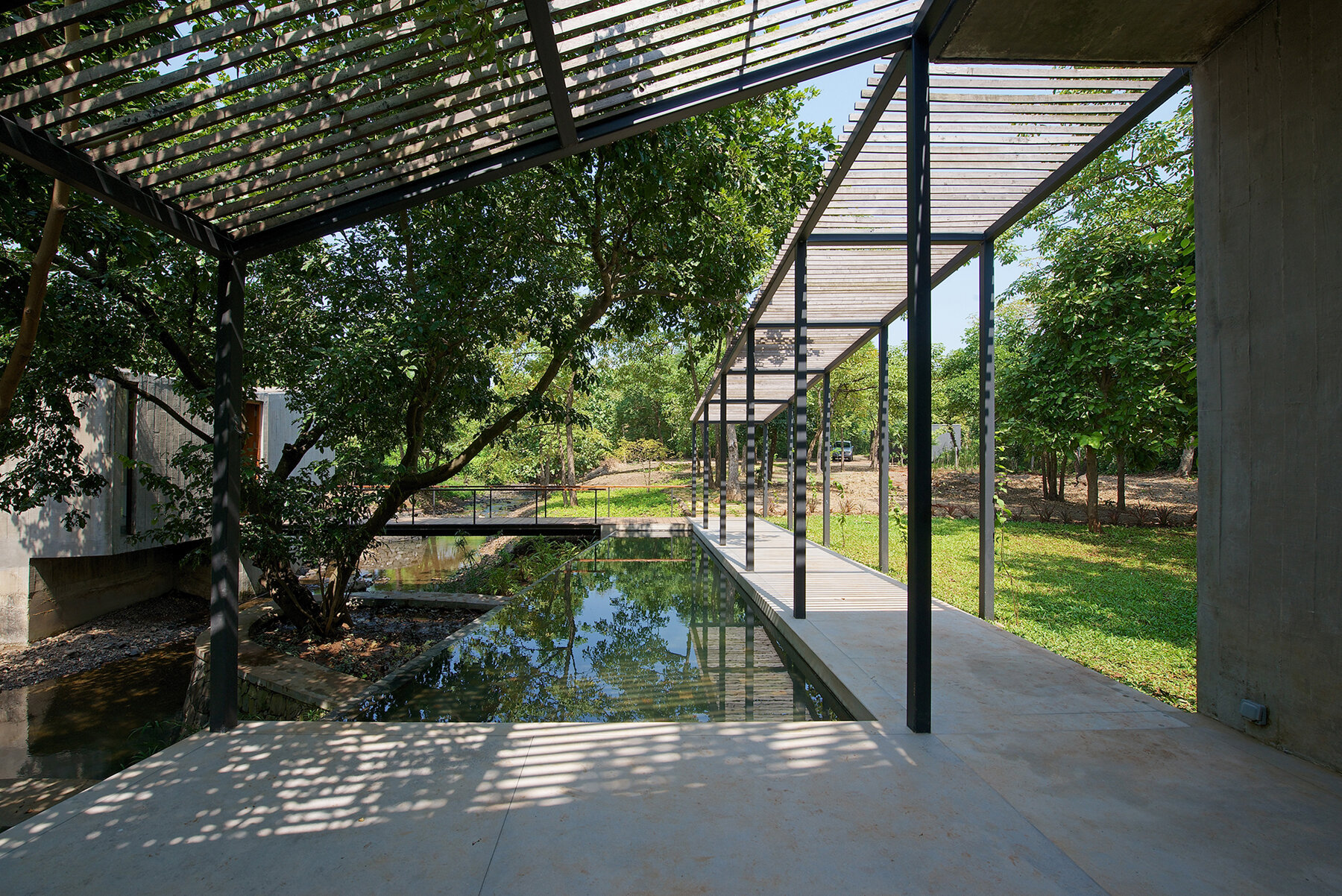
architecture brio, ‘house on a stream’
DB: can you talk about the influence that the late architect geoffrey bawa had on your work?
RV: yes. geoffrey bawa’s work had such a powerful influence on both of us. not only on a purely architectural level, but also on the thinking about what role architecture plays in everyday lives.
his architecture was a complete opposite of what I had learned in delft during my students years. in the netherlands the emphasis was on the world of ideas and the attempt to shape these ideas, in the most pure way, into a building.
instead, geoffrey bawa created an environment. within the wondrous natural world of the tropical island, the purpose of architecture was to emphasise and intensify the experience of this landscape, and the essentials of architecture; light, material, texture and space.
we loved that his architecture did not have the pretence to be more important than its surrounding. it allowed life to evolve in a more serendipitous way and these principles have become one of the cornerstones of our practice. the riparian house in karjat is one of those projects that is about the ‘act of disappearance.’ like a chameleon it quietly shelters on the edge of a hillock peeking through the grasses at the river gently flowing by.
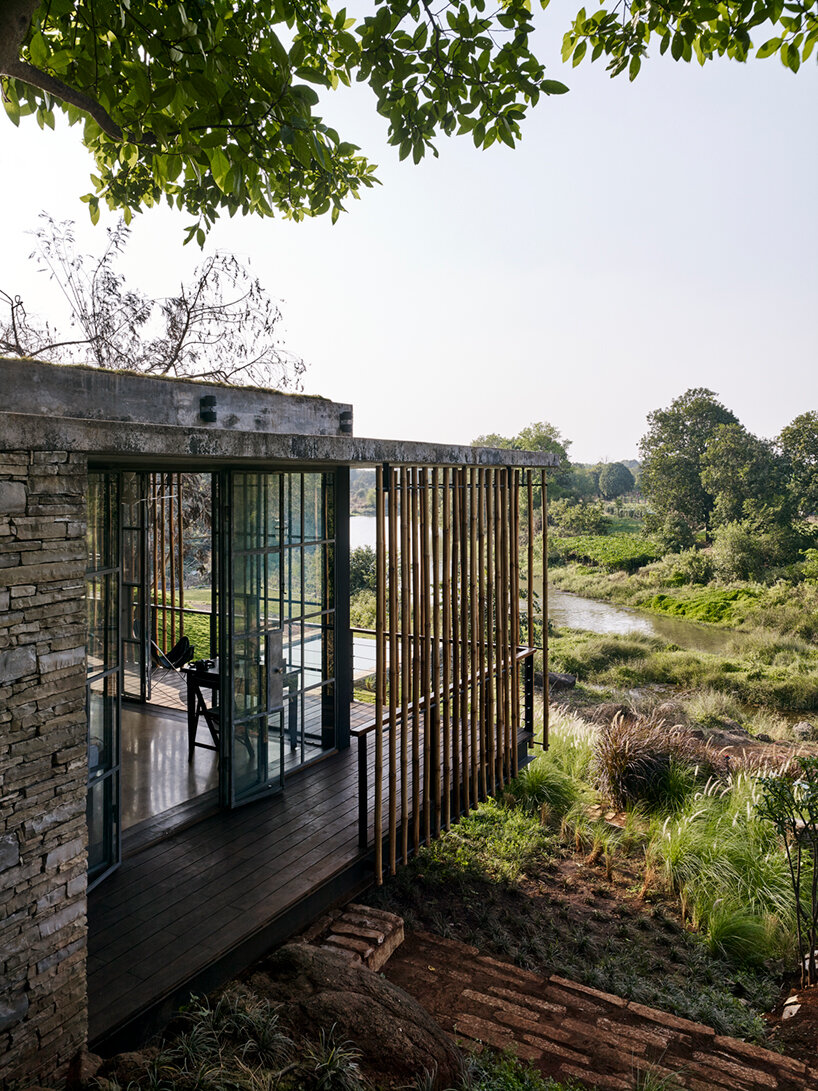
architecture brio’s riparian house near mumbai is embedded into the natural landscape | read here
SB: geoffrey bawa has been greatly undervalued in the western architectural scene, however in asia he is revered as a demi-god. according to us this is equally problematic. much of his architecture is formulaic, ‘evidenced’ by ‘newspaper real estate ads’ selling homes in ‘bawa style.’ even if they haven’t been designed by bawa or his followers.
a journalist friend, from the time we were in sri lanka, once questioned the generally uncritical reverence for bawa’s architecture, labelling most of the famous resorts as ‘mere cookie cutter hospital buildings.’ the problem is of course when an architectural position has become so generally accepted and even commodified, it risks becoming oppressive. architecture stops innovating and adjusting to new conditions and the changing challenges a society faces. in fact it then starts to suppress innovation.
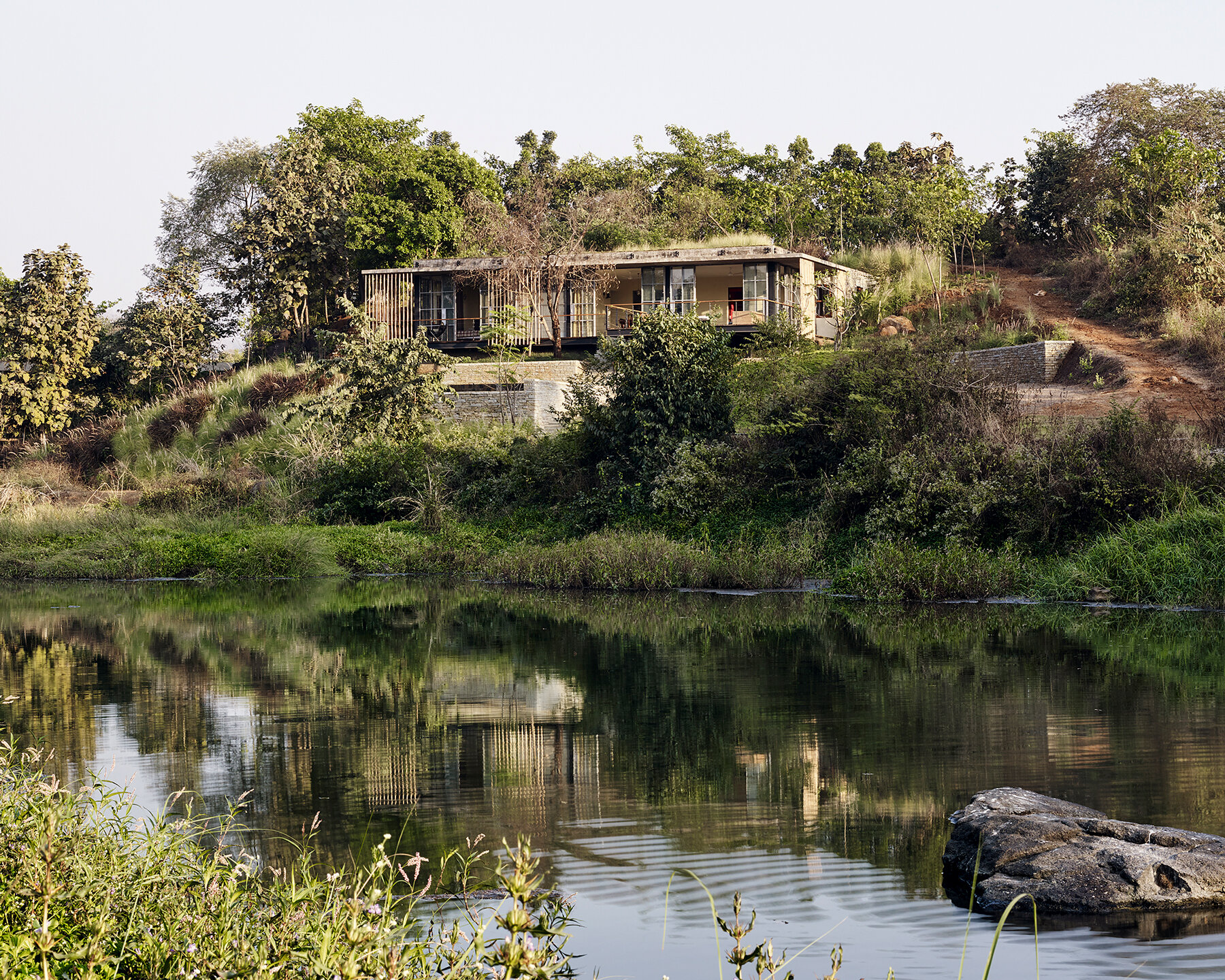
architecture brio’s riparian house near mumbai is embedded into the natural landscape
DB: how has the definition of ‘sustainable’ design changed since you began your firm in 2006?
RV: looking back to 2006, if sustainability wasn’t already the most critical challenge for architecture then, now it is beyond critical. however practising in both the developing and developed world, we realise that architectural practices like ours have merely been able to scratch the surface of what is required. our impact has been at the most symbolic and aspirational.
architecture is ingrained in lifestyle choices. no matter how ‘sustainable’ for example, a typology such as a weekend home claims to be, by definition it is not sustainable. more than the architectural solutions, its relative distance to the city and whether the pool has a heating system is what matters. from our experiences working in india, malaysia and the philippines where capital financing is expensive, construction unfortunately continues to be led by the lowest dominator and the lowest capex.
SB: we don’t believe that a blind faith in technology is our way (to get) out of the crisis. we see the limitations in all parts of life. for example: when as a society we’ve just managed to become conscious about the amount of plastic and packaging of the products we buy in our supermarkets, packaging in ‘mail to order’ has exploded to the extent that there’s not enough paper to print books anymore! in a span of a decade, while we’ve just been able about to get a hang of driving electric cars, air travel is and will continue to grow exponentially. more so, it is likely that all efforts done on private fossil fuelled car ownership will be nullified by space tourism.
RV: sustainable architecture requires a radical lifestyle change, an overhaul of government, private and corporate investments in a sustainable future, and an architecture that likes those with our diverse cultural intelligence. the COVID-crisis has shown how drastically we can re-organise ourselves if human lives are visibly at stake. we’re currently living in the most transformative period humankind has ever experienced. the early 20th century modernists were able to respond to a transition to a carbon economy after it had already started 5 decades earlier. our challenge is that we have to imagine an organisation of our lives and our environment 5 decades ahead of a non-carbon-based economy.
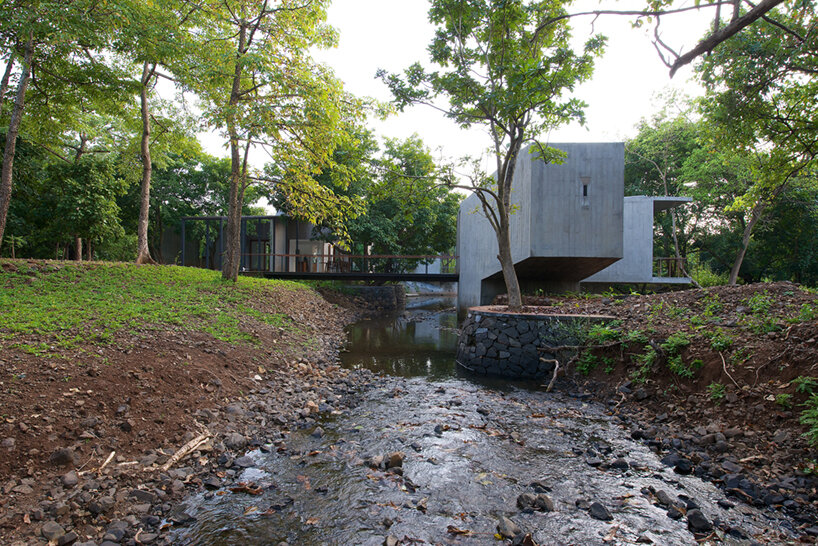
architecture brio weaves retreat house over stream in india | read here
DB: do you feel that there has been a renewed interest and appreciation in traditional materials and building techniques in india and further afield?
SB: yes, and I believe it comes from a reaction against our fast evolving world. a knee-jerk reaction to our technological world spiraling out of control is often to reject technology, and look back in time for a moment when technology had not yet ‘spoiled’ our world, and our way of living. and india is the prime example of a place where both those worlds meet. (often in the most violent and destructive manner by the way).
nevertheless, the way we personally experience the world is that our natural environment does give us a sense of rootedness and comfort and can act as a counterbalance. raw, untreated, unprocessed materials for example return our gaze to an origin and an appreciation of the value of our natural world.
there is nothing more exhilarating than the granular layers of a metamorphic stone masonry walls, high up in the himalayas. and the knowledge that this once used to be an ocean, makes one humble and human. ironically, environmental regulations have accelerated the decline of this regional tradition of building in stone. stone mining in the mountainous region is banned, which is partly understandable. but it has also promoted a building industry of concrete framework constructions which are now dominating the himalayan landscape. and even worse, all the cement, stone and sand now has to be transported from the plains, up the narrow winding mountain roads, causing more harm and destruction than doing any good.

himalayan mountain home, under construction
can you tell us about bB-studio, which was formed alongside billionBricks?
RV: about 6 years ago prasoon kumar walked into our office in mumbai, with this rubbing off enthusiasm and commitment of his to (in simple terms) eradicate homelessness, and we really hit it off. in the netherlands, when one talks about 95% of the world living without architecture, it all sounds a bit abstract and unreal. more so the conclusions drawn from that context, can be rather decadent. but india is one of those places where this is very apparent. the chasm between those that struggle for basic shelter, and those that are supposedly trained to design them is seemingly unbridgeable. on all aspects such as financial, economic, cultural and political level, their goals, by virtue of their respective positioning within society, are misaligned.
we decided to set up a dedicated innovation studio together with the mantra ‘never design poorly for the poor,’ but always with the ambition to scale to create impact in the larger world.
through projects like weatherhyde, we learned more about the nature of the problem and the interlinked web of expectations and suppressions between the homeless, politicians, formal residents, ngo’s and the media. in a project like the school for stateless children in malaysia, called the etania green school, we explored ideas of scalability and using minimal resources to achieve ‘good design.’
with our recent project powerhyde, or ‘billionBricks homes’ we link the enormous demand for housing in the economically weaker section with global financing and energy positive design. imagining the developing world as a potential to leapfrog to a sustainable future for us all instead of a global environmental disaster waiting to happen, has immense transformative power. we have already built a prototype and are now midway developing a first community of 500 homes in the philippines.
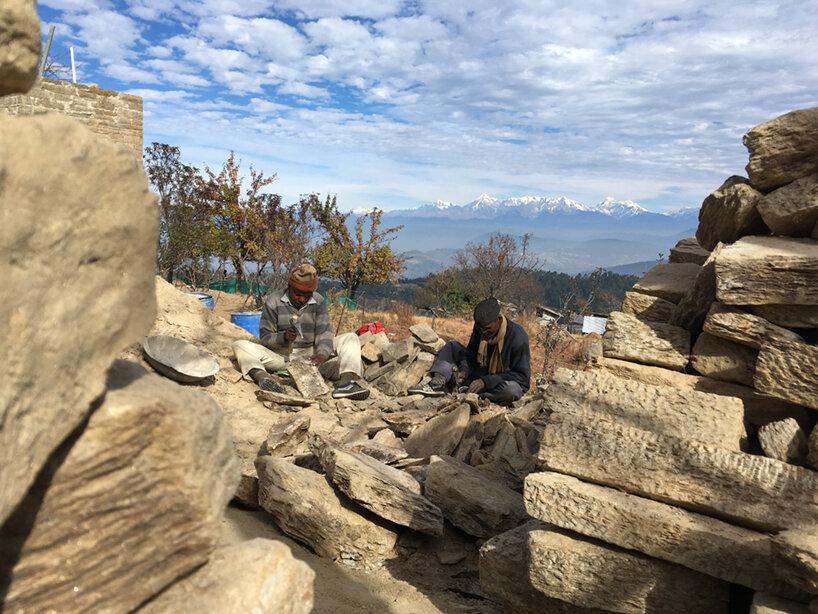 himalayan mountain home, under construction
himalayan mountain home, under construction
what do you consider to be the role of an architect working in today’s society?
RV: a big question, and a big answer. 🙂 but honestly, the world in 2021 is at a threshold moment. like never before, architects have the opportunity to create visionary architecture that foreshadows the energy transitions and social transformations that we as a global society are about to experience.
but unlike the modernists who could build upon the changes that had already transformed society, an architect, especially one that is practising across the global south, faces the demanding challenge. it is the challenge to enable architecture to tell stories about our landscape and our past, and what it is, that we need to radically do differently. while our natural world is slowly rendered unrecognisable, architecture has the ability to realign ourselves in dialogue with nature in a reciprocal relationship. but sometimes architecture is in its own way. geoffrey bawa is famously supposed to have sighed from the window of a hotel room on one of his foreign trips: ‘there’s too much architecture in my view!’
how do you see the future of our urban centers, both in india and globally? what are the biggest challenges facing architects today?
RV: in megacities like mumbai there is a constant battle between development and the natural environment. and unfortunately the conversation is completely polarised. those in favour of development often have short-sighted goals, whereas those in favour of preservation often fail to imagine other possibilities (in fear of potential fraud).
certainly in the developing world, the project of the preservation of the natural environment always loses, because infrastructure development is always perceived to be running behind, and therefore prioritised. the support of the destructive coastal road project in mumbai by the general public, even by those economically disadvantaged who will not be able to afford making use of it, is a case in point. the promise of progress is seductive.
however as designers we need to play on our strengths. we certainly can play an important role by using our ability to imagine possibilities of coexistence and mutual benefiting rather than exclusionary development.
mumbai, with its extreme population density and coastal geography is likely to be paralysed in the next few decades by a changing climate. 50 out of its 187 kilometres of coastline are at risk of eroding or flooding. the mumbai artist, on a small scale, attempts to set an example of how you could build with caution. it is posing some critical questions when developing the coastline of mumbai. is it possible to develop different relationships with the land other than massive defensive infrastructure projects? can we ‘build in’ climate resilience? can we use building methods to create a more thoughtful and resilient architecture, causing less impact on the fragile ecosystems, and making them future ready?

